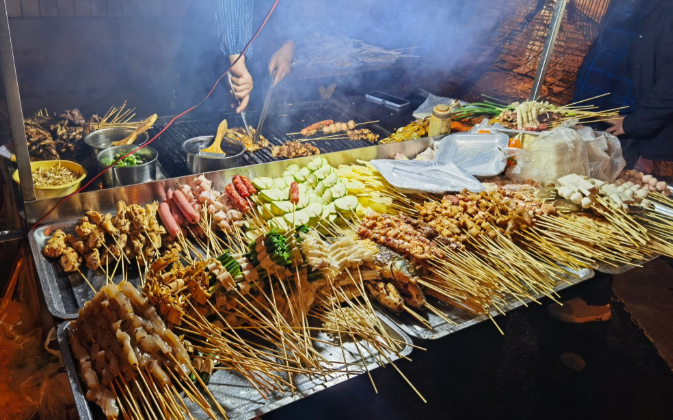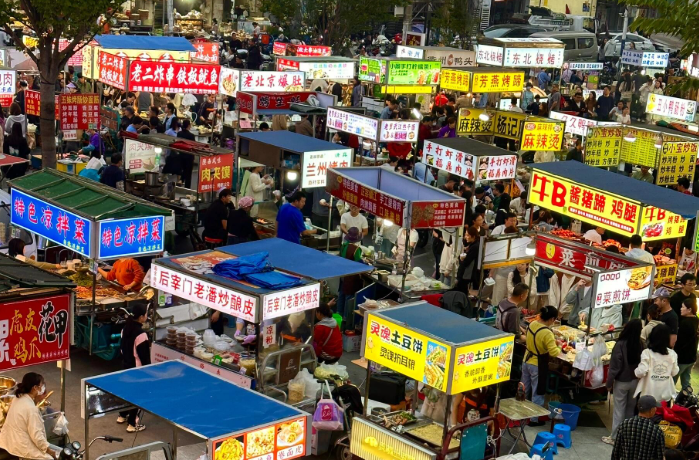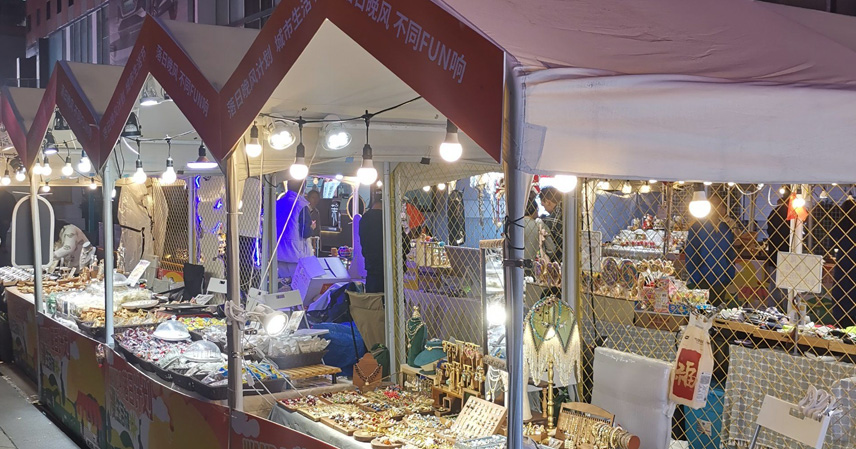Many consumers have noticed that street food prices have been rising. A portion of wontons at a night market may cost 10 yuan, while the same dish at a neighborhood breakfast shop sells for 6 yuan. Common snacks like fried rice or cold noodles are often pricier at street stalls than at nearby stores
This phenomenon has sparked discussion. Street food was once popular for being affordable, but some customers now feel it’s “unaffordable.” On the other hand, vendors often say profits are thin and running a stall is tough.

The Hidden Costs Behind Higher Prices
People often assume street vendors don’t pay rent or utilities, so their costs are just ingredients and labor, making prices cheaper than shops. But this view is outdated. Many street stalls now face significant “hidden expenses.”
Take Xiaoling, who sells lemon tea at a night market for 15 yuan. Customers think it’s as expensive as branded bubble tea. Xiaoling says she wishes she could sell cheaper. Her monthly stall fee is 1,800 yuan. Fresh ingredients spoil quickly, and combined with cart charging, maintenance, and cleaning supplies, selling 20 cups a day barely covers costs.
Dou Ge, selling stinky tofu, now charges 15 yuan for six pieces—almost double the price from three years ago. He cites rising ingredient and oil costs. Without raising prices, he couldn’t break even. Nearby vendors have had to close after price increases hurt sales.
Urban regulations have also changed. Random roadside vending is restricted, replaced by government-planned night markets with standard management. To operate legally, vendors must pay high stall fees.

Mr. Pan in Foshan sells smoothies and knows the challenge. On busy days, he can earn 1,500 yuan, but the market’s stall fee and utilities can reach 248 yuan per night, with a monthly rental of 1,800 yuan. Without raising prices, profits are impossible.
Invisible Expenses
Besides visible costs, many “invisible” expenses eat into profits. Vendors must pay for health permits, equipment maintenance, and battery charging—around 300–400 yuan monthly. Daily cleaning and supplies add another 50–100 yuan. Initial investments in carts, ice machines, and refrigerators can reach 15,000 yuan, all factored into the price of each item.
Some vendors increase prices to maintain quality. Xiao Qin, selling beef offal in Guangzhou, insists on fresh ingredients, even sourcing peanut oil from home. Using frozen products would cut costs in half, but she refuses to compromise on her reputation.
The “Influencer” Effect
Rising street food prices also relate to the “social media economy.” Vendors now focus on presentation and marketing, creating higher perceived value. Tiramisu, sweet potatoes, and even ordinary dishes like bean sprout stir-fry are priced significantly higher than their base cost due to packaging and concept appeal.

Consumers are willing to pay for experience and shareability, but expect value. Some find street prices higher than brand stores without a matching quality improvement.
Conclusion
Street vendors face a dilemma: consumers see prices as high, while vendors struggle with thin profits. Rising costs, regulatory fees, and social media-driven marketing all play a role.
Customers are willing to pay for fresh, tasty food at slightly higher prices, but overpriced or ordinary items will push them away.
Street food embodies city vitality, nostalgia, and convenience. To sustain it, vendors should focus on quality and value, consider cost-sharing or joint procurement, and avoid over-marketing. Cities can offer affordable, regulated stalls and reduce fees to support vendors.
Ultimately, beloved street food is not about extravagance—it’s about affordable, authentic flavors and community spirit. With fair prices and quality guaranteed, street food can remain a warm, lasting presence in urban life.
References:
- Interviews with street food vendors in Guangzhou and Foshan, 2025.
- Market research on night market stall fees and operating costs, 2023–2024.



